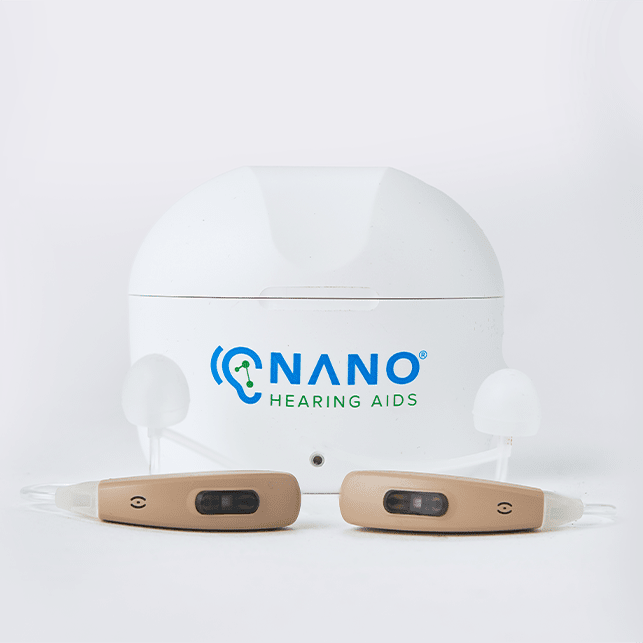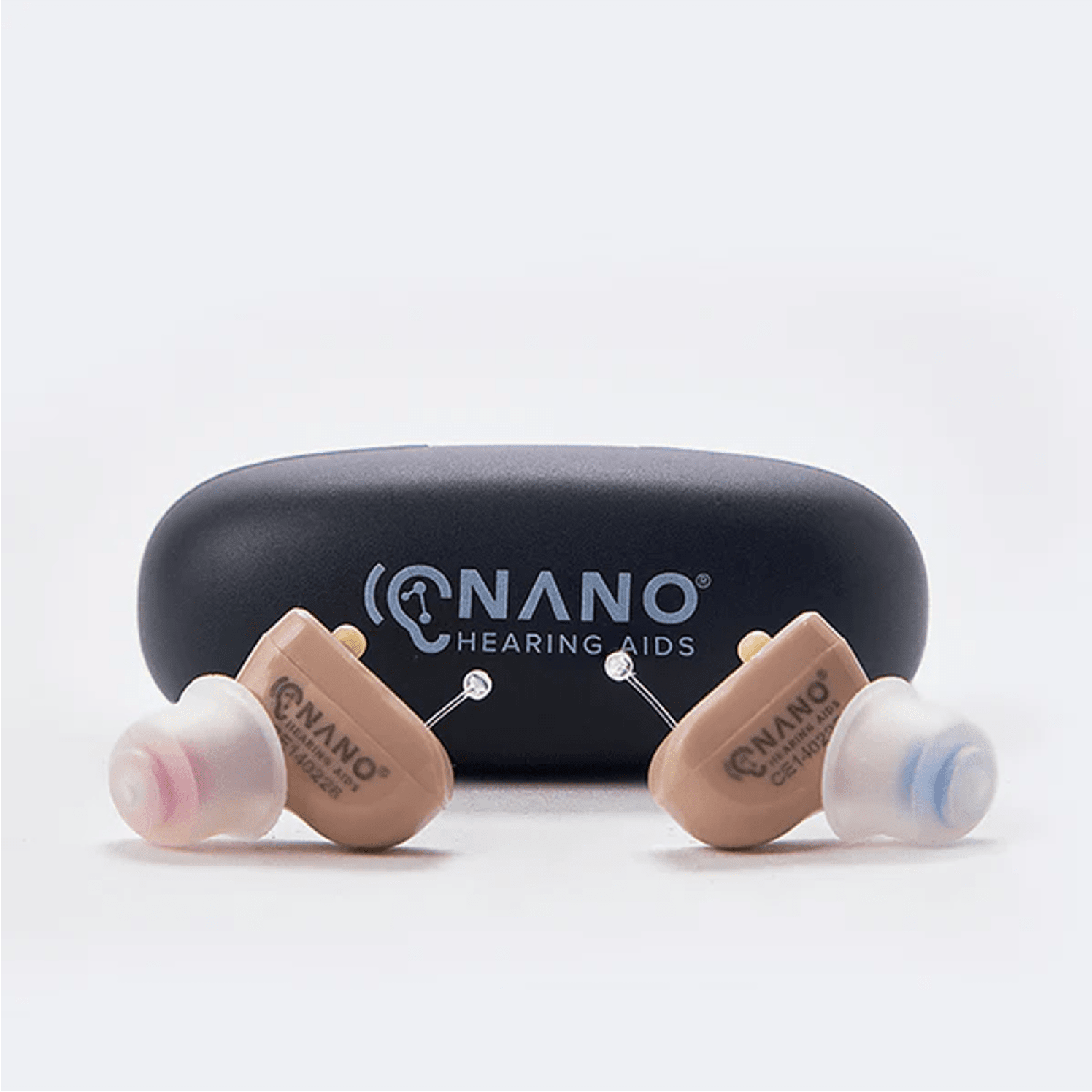Key Takeaways
- Cookie bite hearing loss specifically impairs the ability to hear mid-range frequencies.
- It is often a genetic condition, but can sometimes develop due to other health issues.
- Common symptoms include difficulty understanding speech and needing to increase the volume on devices.
- Diagnosis is typically made through a hearing test, and hearing aids are the most common treatment.
- Nano OTC hearing aids are a practical, prescription-free solution for adults with perceived mild to moderate hearing loss.
What is Cookie Bite Hearing Loss?
Imagine your hearing ability as an audio equalizer with sliders for different frequencies. Now, picture that the sliders for the mid-range frequencies have been lowered, making sounds in that range harder to hear - that's what it's like to have cookie bite hearing loss. The name comes from the shape of the audiogram (a graph that shows hearing ability at various frequencies) of someone with this condition; it dips in the middle frequencies, resembling a cookie with a bite taken out of it. The image below is an audiogram of cookie bite hearing loss.
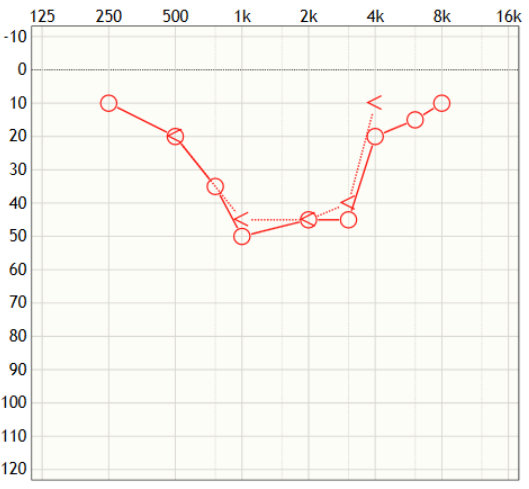
Degrees of cookie bite hearing loss:
- Mild cookie bite hearing loss: Involves a decrease in hearing sensitivity in the mid-frequencies (typically between 500 and 2000 Hertz) ranging from 26 to 40 decibels. Individuals might not notice a significant impact on their daily life but may need to adjust the volume slightly higher for comfort. They may have difficulty with certain speech sounds and music notes that fall within these mid-frequencies.
- Moderate cookie bite hearing loss: Characterized by a decrease in hearing sensitivity in the mid-frequencies ranging from 41 to 55 decibels. People with moderate cookie bite hearing loss often find speech comprehension challenging, especially in noisy environments. This level of loss makes it difficult to catch certain vowels and consonants without the assistance of hearing aids.
- Severe cookie bite hearing loss: Involves a significant decrease in hearing sensitivity in the mid-frequencies, ranging from 56 to 70 decibels, and can extend to more severe levels in some cases. This severe impact makes communication almost impossible in normal conversation without the use of hearing aids or other assistive devices.
Nano Hearing Aids are FDA-registered, Class I devices. These OTC hearing aids are designed for individuals over 18 years of age with perceived mild to moderate hearing impairment. Nano won the Top ENT Solution Provider 2023, has 24/7 customer care, and has an affordable price compared to others.
Causes of Cookie Bite Hearing Loss
- Genetics: The primary cause, it can be passed down through families.
- Health conditions: Certain health issues, such as an acoustic neuroma, may contribute to its development.
- Aging: While it primarily affects mid-range frequencies, age-related changes can exacerbate the condition.
Symptoms of Cookie Bite Hearing Loss
- Difficulty with speech: Trouble understanding speech, particularly consonants.
- Volume control: Needing to increase the volume on electronic devices.
- Music and environmental sounds: Music may sound less rich, and some environmental sounds might be missed.
Besides that, it's important to understand that these symptoms evolve over time. Initially, they might be mild and hardly noticeable, but they can progress. Therefore, if you or someone you know is experiencing these symptoms, it's wise to consult a hearing professional.
Diagnosing Cookie Bite Hearing Loss
A hearing professional will conduct a comprehensive hearing test called an audiogram. This test measures how well you can hear sounds at different pitches and volumes, and the results are plotted on a graph that shows your hearing sensitivity across a range of frequencies. If the graph shows a dip in the mid frequencies, it's indicative of cookie bite hearing loss.
Treatment Options for Cookie Bite Hearing Loss
Advancements in Hearing Aid Technology
Hearing aids are often the first line of treatment for cookie bite hearing loss. They can be finely tuned to amplify the specific frequencies you have trouble hearing, without over-amplifying the frequencies you hear well. With advancements in technology, hearing aids have become more effective and less obtrusive than ever before.
Modern hearing aids come with a variety of features designed to improve hearing in different environments, such as directional microphones, noise reduction, and connectivity options for phones and TVs.
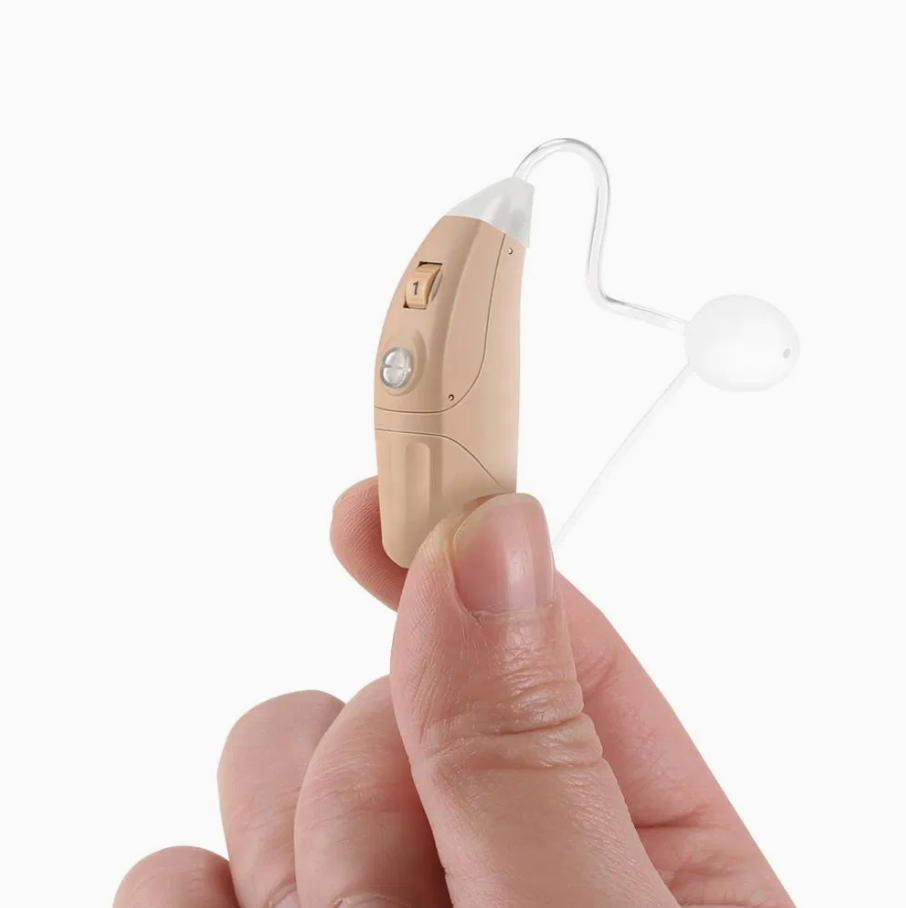
Exploring Surgical and Non-Surgical Interventions
While hearing aids are the most common treatment, there are other options available. For some types of hearing loss, cochlear implants or bone-anchored hearing systems might be appropriate. These devices can provide a sense of sound to those who can't benefit from traditional hearing aids.
There are also non-surgical interventions, such as hearing rehabilitation programs that can help you develop skills to cope with hearing loss. These programs often include auditory training and lip-reading instruction to maximize your remaining hearing ability.
Living with Cookie Bite Hearing Loss
Living with cookie bite hearing loss can be challenging, but with the right support and adjustments, many people lead full and active lives. Besides using hearing aids or other devices, it's helpful to inform friends and family about your hearing loss so they can communicate with you more effectively.
Additionally, taking advantage of assistive listening devices, like amplified phones and personal FM systems, can make a big difference. It's also beneficial to create a favorable listening environment at home and work by reducing background noise and improving room acoustics.

Can Cookie Bite Hearing Loss be Prevented?
Here are the steps one can take to reduce the risk of developing cookie bite hearing loss:
- Minimize Loud Noise Exposure: Reduce your time in loud settings, such as concerts or areas with heavy machinery, and use hearing protection when necessary.
- Regulate Personal Audio Volume: Keep the volume low on personal audio devices and take frequent pauses from wearing headphones.
- Consistent Hearing Check-Ups: Arrange for regular hearing assessments, especially if your family has a history of hearing loss.
- Maintain a Healthy Lifestyle: Pursue a healthful lifestyle. Conditions like hypertension and diabetes can influence your hearing health.
- Awareness of Ototoxic Medications: Stay informed about drugs that can damage hearing and discuss their risks with your healthcare provider.
Nano OTC Hearing Aids for Perceived Mild to Moderate Hearing Loss
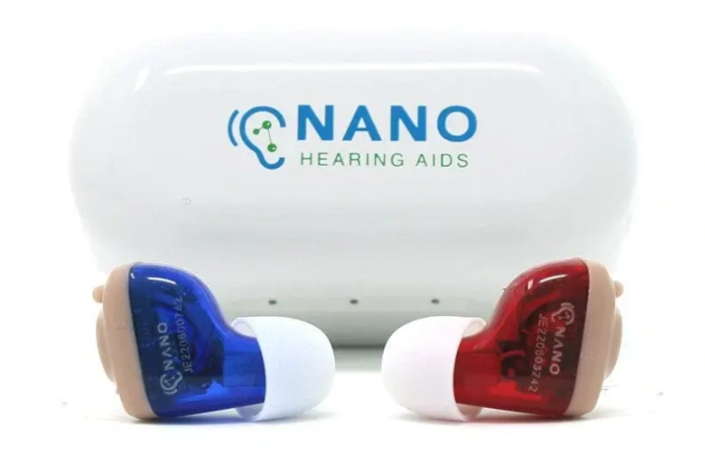
Our range of FDA-registered OTC hearing aids were designed for adults with pereived mild to moderate hearing loss. Nano hearing aids are extremely affordable. For example, our basic completely-in-canal model, CIC Digital 2, currently priced at $297, has the following features:
- Discreet, nearly invisible design
- A set of ear domes for precise fitting
- Simple push-button control
- A battery life of 12 hours
- Charging case for two recharges on the go
If you need help choosing the perfect model for your needs, or additional information on Nano hearing aids’ features and insurance coverage, contact us at (866) 913-0979.
Frequently Asked Questions (FAQ)
What is the main difference between cookie bite hearing loss and other types of hearing loss?
Cookie bite hearing loss specifically affects the mid-range frequencies while other types of hearing loss, such as high-frequency loss, affect different parts of the hearing range.
Can cookie bite hearing loss get worse over time?
Yes, like many types of hearing loss, cookie bite hearing loss can progress, which is why regular hearing evaluations and timely treatment are important.
Are there any specific communication strategies for someone with cookie bite hearing loss?
Yes, using clear speech, reducing background noise, and facing the person while talking can help. Additionally, visual cues and lip-reading can be beneficial.

